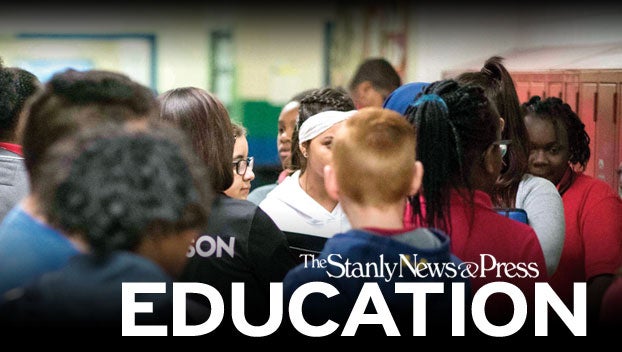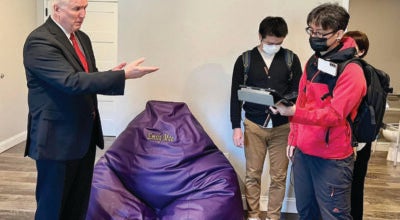Pfeiffer to offer mix of in-person, online instruction for fall semester
Published 4:54 pm Tuesday, August 4, 2020

- FROM METRO CREATIVE CONNECTION
|
Getting your Trinity Audio player ready...
|
Pfeiffer University is preparing to invite students back to campus for in-person instruction this month, but it will have remote learning options available for both students and staff who are reticent about physically returning to the classroom.
“Our emphasis is on returning to in-person classes safely, but there is a hybrid option,” said Dr. Scott Bullard, president of the university.
More classes will be offered online which will help reduce foot traffic inside the buildings and allow for more social distancing.
While navigating the beginning of a new school year in the midst of the coronavirus pandemic is not an easy task, with new information and guidance being dispersed seemingly each week, the primary priority is the safety of the students and staff, Bullard noted.
“In a quickly evolving world, Pfeiffer is committed to the safety of students and employees, committed to monitoring and complying with CDC guidance and our governor’s guidance,” he said, referring to the Centers for Disease Control and Prevention.
In order to ensure that proper safety protocols are put into place, a working group of faculty and staff from across the university have been meeting for several months to develop a comprehensive plan to allow Pfeiffer to safely open in the fall. The group, comprised of about 10 members and called the Total Quality Management Team, helped guide the university on its policies during the spring semester such as transitioning to full-time online learning in mid-March.
TQMT, which meets twice a week, created a 41-page document called “Welcome Home: A Return to Campus Plan,” which covers, among other things, safety measures for students and staff when on campus, containment and mitigation protocols if people do become infected and safety requirements for athletics. The document can be found on Pfeiffer’s website.
“It’s becoming my Bible,” Bullard said of the plan in terms of “what it’s going to look like in the trenches as we return to campus.”
When students return to campus (classes begin Aug. 18), they, along with staff, will be required to wear cloth masks in public areas (classrooms, cafeterias, hallways) where social distancing is not possible. Pfeiffer will issue a cloth mask to each student and staff member when they return and there will also be sanitation supplies located throughout the campus. Visitors on campus will also be required to wear face coverings and complete health screenings.
While the face coverings may be an inconvenience for some people, “we are acknowledging our belief in the scientists who are saying that masks are our best tools for minimizing the potential spread of the virus,” Bullard said.
For social distancing, all classrooms will be rearranged to ensure six feet between students and teachers, though masks will still be required, and the university’s two gymnasiums will also be utilized as classrooms, Bullard said. The prospect of conducting certain classes outdoors, where the virus is less likely to be transmitted, is also being discussed.
Signage indicating room capacity (which will be 50 percent) will be posted outside classrooms, meeting spaces and large areas like the chapel, while public health signs, such as promoting hand washing and wearing masks, will also be posted throughout the campus.
All students and staff will also be required to complete daily symptom screening questionnaires through the Live Safe app. It should be completed upon returning to campus and each day before going to class or arriving on campus.
If students or staff tests positive for the coronavirus or answers “yes” to any of the questions on the screening, they should immediately consult a health provider and quarantine for 14 days. Infected students who live on campus will be housed in a separate wing of a residence hall or the President’s House, which is currently unoccupied. The university will also assist the county health department in working to identify and inform people who were exposed to recently diagnosed patients.
University staff are all working remotely, unless they have a pressing reason to be on campus.
“We are trying to make it easier for our faculty to deliver online courses if they feel that they need to do so” due to any underlying health conditions, vulnerable family members or some other reason, Bullard said.
While specifics are still being ironed out, Pfeiffer will make the necessary accommodations for any student or faculty member to continue their work, said Casey Habich, director of marketing and communications for the university and a member of TQMT working group.
“There’s going to be a lot of different variations of instruction delivery,” he added.
Though many students will return to campus for in-person instruction, all learning will switch to online after the Thanksgiving holiday.
Bullard said a safe return to school will require some flexibility and willingness to adapt as the COVID-19 pandemic changes throughout the school year.
“You have to be willing to watch developments and adjust your thinking,” he said, adding that transparency will be key, even if it means admitting that a certain policy or guideline was wrong.
“I think humility will be an important virtue here” in dealing with the virus, Bullard said.
As university president, Bullard regularly meets with presidents from the 35 other independent colleges and universities across the state, where he has been able to ask his counterparts for advice and discuss best practices about how to safely reopen. He said conversations with presidents from Duke and Wake Forest, whose hospitals are currently treating coronavirus patients, have been especially helpful.
And he believes the pandemic could help alter the recruiting ground for colleges. He said there could be a shift in thought for many prospective students from wanting to attend larger more-populated universities in urban areas, such as UNC Charlotte, to smaller less-dense ones in rural areas like Pfeiffer.
“Rural (universities) might be safer in many cases,” Bullard said, adding that Pfeiffer’s smaller size “helps us be a little more agile than larger institutions and we can adjust more quickly.”





